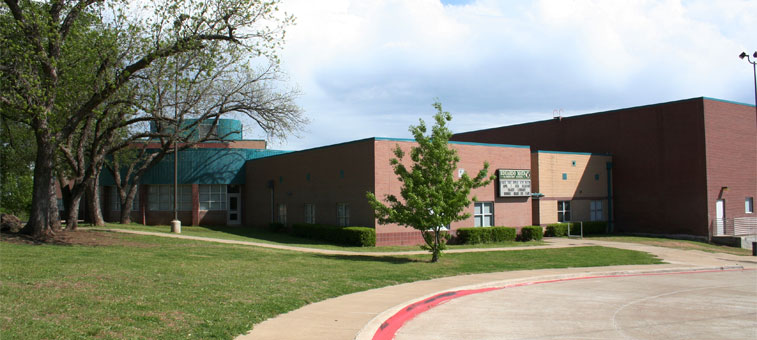
Dallas ISD had several reasons for converting Eduardo Mata Elementary into a Montessori school this fall; among them were a move toward its “school of choice” philosophy, a way to fill a mostly empty campus because of its outdated prior use as a fourth- and fifth-grade center, and the general popularity of Montessori schools within the district.
Another was some DISD trustees’ belief that Mata Montessori‘s location within the Woodrow Wilson High School feeder pattern, whose students are given admission priority, is a way to provide relief at Lakewood and Stonewall Jackson elementary campuses, both of which are overcrowded, that would be preferable to redrawing school boundaries. Some people, however, believed that this would never work, that parents of children at established Blue Ribbon schools, which Lakewood and Stonewall are, would not move their students.
So did they? Yes, and in fact, Lakewood Elementary has the second-highest transfer rate of Mata students, second only to Mount Auburn Elementary, which is just a few blocks south on East Grand and whose families were given first dibs on enrollment. Some families also moved from private or charter schools; the district doesn’t track those transfers but Mata Principal Claudia Vega estimates it to be 10-15 percent of students. (The full breakdown of Mata students’ home schools is at the end of this story, and in full disclosure, my daughter is a Mata student.)
As of today, Mata Montessori consists of roughly 56 percent Hispanic students, 33 percent white, 8 percent black and 3 percent Asian, American-Indian or multi-race. It’s also close to half girls and half boys, 57 percent female and 43 percent male. (These numbers do not include Mata’s fifth-graders, who attended last year as fourth-graders and will be the last of the school’s traditional students.)
Most parents who made the switch say they did so for one of three reasons: the Montessori educational approach, the dual language classrooms or the class sizes. Elisa Johnson, who says her daughter had a good year of kindergarten at Stonewall, finds herself in the “all of the above” category.
“We wanted our daughter to be in a smaller school with smaller classes,” Johnson says. “Stonewall is so big and crowded that kindergartners have lunch at 10:35, and the first-graders are all in portable [buildings].”
Because Mata is opt-in and allows only so many students to keep its multi-grade classrooms balanced, some classes have as few as 15 students. The dual language classrooms, however, such as the one Johnson’s daughter is in, are at capacity. Johnson says she wishes the staff would have “stuck to their guns about limiting the number of kids in the dual language program in order to preserve the promised class sizes,” but that said, her class this year is the same size as her Stonewall kindergarten class, and “it gives her more Spanish speaking kids to interact with,” she says. Spanish is “a gift that we just cannot give her ourselves, and I am thrilled that she seems to be picking it up so well.”
At one point in August, every Mata classroom was enrolled to capacity, and the school created a wait list for interested families. However, since the start of the school year, Principal Vega says, some families have backed out.
“We had some parents who said outright, ‘I’m just going to sit back and wait and see,’ and some who had older siblings who wanted to ride it out one more year until that sibling finishes [at the home school],” Vega says.
The school now has a few openings across grade levels, pre-k through second, for “any student who wants to come in and attempt the Montessori program,” she says.
The Dallas ISD board did not give final approval for Mata’s transition to a Montessori school until late April, so Vega had roughly four months to hire and train staff that are state-, Montessori- and, in some cases, bilingual-certified, as well as outfit classrooms with Montessori materials (volunteers are busy each day laminating and cutting 15,000 materials that arrived just before the start of school, even hosting a “cutting social” this Saturday).
Despite that the school “turned on a dime,” she says, “it’s going really well.” The biggest adjustment, she believes, has been for parents who are used to traditional schools and wonder why their children aren’t bringing home completed assignments or much homework, for example. Vega is in that camp herself, as both an administrator and a parent.
“You want to see a final product at the end of the day, or at the end of the lesson, but in the first few weeks, there’s not necessarily a final product because it’s an intrinsic product,” she says. During the initial weeks, students learn “the capability to observe, to concentrate, to hone in on those fine motor skills,” she says, “I have to remind myself, OK, that’s a step that needs to take place in order to build to the next portion.” In terms of homework, “believe it or not, they work a lot during the day, so when they get home, we don’t need to exhaust them anymore,” Vega says.
Johnson, who attended a Montessori school until second-grade, says her daughter was “a little hesitant about the classroom structure at first” but “really likes it now, and routinely tells me her days were awesome.”
“She is also free to pursue the lessons that best fit where she is,” Johnson says. “I have been very impressed with the way that the administrators and teachers have come together with the families. I see a real community being built around a shared passion for the Montessori system and the promise of this school.”
Mata Montessori students’ home schools (in numerical order)
Mount Auburn: 68
Lakewood: 39
Oran Roberts: 14
Lipscomb: 13
Stonewall: 10
Reinhardt: 8
Robert E. Lee: 5
Sanger, Reilly and Zaragoza: 4 each
Quincy Adams: 3
Pleasant Grove, Silberstein, Smith and Truett: 2 each
Kleberg, Mosley, Pease, Pershing, Rhoades, Saldivar and T. Richardson: 1 each
Source: Mata Montessori






